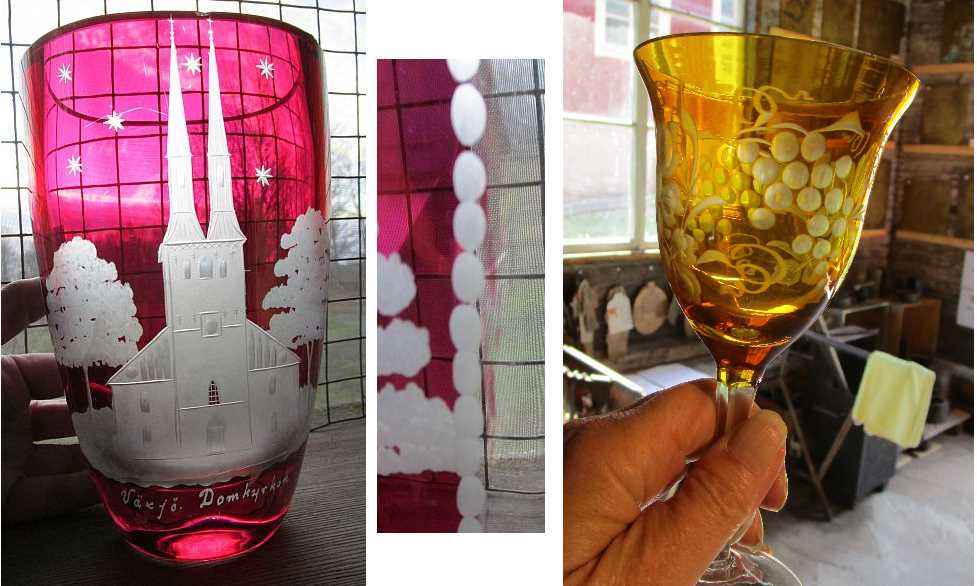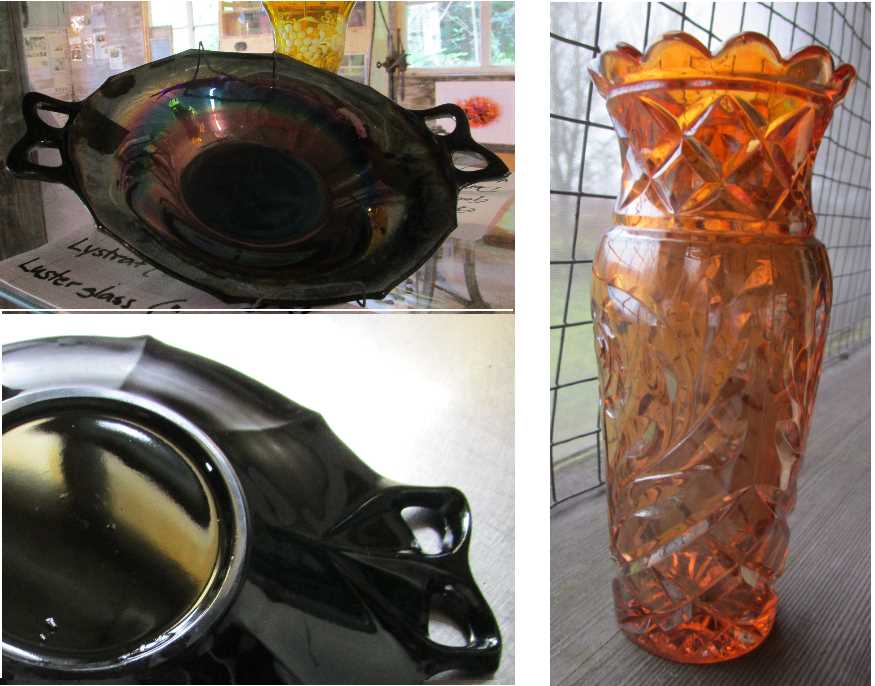— — This is an outdated page, click here for the updated page — —
Staining
is a way to dye the surface of a piece of glass. It is a chemical process that changes the surface layer of the glass.
In the book Glas by Steenberg-Simmingsköld the process is described (p 361, my translation):
" Yellow transparent colour on a glass surface is obtaind by applying a paste, containing, among other substances,
silver salts. The object is then subjected to heat. During the firing silver ions will migrate into the surface, replacing alcaline
ions in the surface. The result of this process will vary with the composition of the glass, for instance the proportions between
sodium and potassium. The firing is done at a relatively low temperature (ca 450 oC). Red stain is the result of
copper salts and firing in a reductive atmosphere. Copper ions will replace alcaline ions, and a beautiful ruby colour will result in
the surface plane.. "
The point is that one gets a unchangeable surface colour without the need for casing in a coloured layer of glass. The coloured layer is very thin, making it easy to cut, engrave or etch through, making clear patterns on the coloured object.
The photo below shows a vase, red-stained and then cut. The middle picture shows that the "painting" was not very exact. To the right a yellow-stained glass with intaglio décor.

